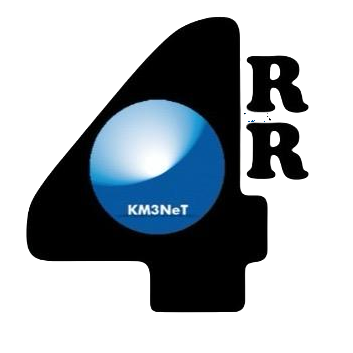


Industry & Innovative technology
KM3NeT4RR is oriented towards industry both developing patents useful for industrial applications and stimulating the birth of new high-tech entrepreneurial activities.
The project is part of a wider research project promoted by numerous European institutes and agencies participating in a consortium (e.g. INFN, Italy; CNRS, France; FOM, Holland). It derives from a big network and it is also aimed to increase collaborations and open-innovation. Data processed through the underwater infrastructure and the on-shore processing center generate benefits for the scientific community using such data for numerous research purposes. The infrastructure provides data and puts online the experiences acquired in various areas of fundamental and technological research not only related to particle physics and astrophysics but also to marine biology, electronic and mechanical engineering, information technology. For example, studying and testing of new technologies for high marine depths such as robotics, new materials for applications in extreme environments, mechanical structures for underwater installations, supply systems operating under pressure help to develop research on electronic and mechanical engineering.
KM3NeT4RR provides also knowledge spillover in the supply chain. The Industry is involved in the design, construction and operation of the infrastructure. Supply chain companies have to provide non-commercial industrial solutions to face a series of complex technological problems and this can give companies the opportunity to collaborate with the scientific and technical staff of KM3NeT4RR, to obtain new technological knowledge and skills and to acquire an incentive to expand their current knowledge status. The benefit of suppliers’ learning-by-doing can produce different types of developments, ranging from improvements in existing equipment to creating processes for the production of new tools for applications to other sectors of science and industry.
Therefore, from a scientific point of view, the new project generates:
– knowledge spillover in the scientific community (the infrastructure produces significant knowledge for the scientific community of reference, especially in relation to free access to data collected by the marine telescope);
– scientific publication and patents (scientists and researchers can access new data, process it and contribute to the creation of new knowledge producing a scientific outputs).
– knowledge spillover in the supply chain (companies involved in the KM3NeT4RR supply chain face the challenge of providing non-commercial industrial solutions for a series of complex technological problems; this gives companies the opportunity to collaborate with the scientific and technical staff of KM3NeT4RR and to acquire new technological knowledge and skills);
The infrastructure has also a potentially relevant impact on numerous societal challenges. It is an important means to face social challenges related to sustainable maritime research but also climate action and environmental efficiency. The infrastructure is able to study the behavior and presence of marine mammals and other species using the acoustic positioning system of the underwater telescope. Moreover, the infrastructure allows continuous and real-time monitoring of oceanographic parameters (temperature, salinity, currents, …) useful for monitoring the evolution and quality of the marine ecosystem of South Eastern Sicily. Oceanographic data can also help Civil Protection and INGV (National Institute of Geology and Volcanology) for monitoring earthquakes and tsunami and also fulfill the EU Marine Strategy. Besides, KM3NeT4RR is useful for the development of programs and solutions for the processing of large quantities of data on GRID as well as IT, telematics and electronic media in hostile environments, broadband optical communication systems. Such research is relevant to tackle with other societal challenge related to the development of smart communication and transport and to the creation of innovative societies
The research infrastructure contributes also to human capital education. KM3NeT4RR can employ scientific, technical administrative and support staff and host PhD students, postdoc researchers, young academics and other short-term users who can enjoy training in terms of new knowledge and experience acquired.
Social effects can be summarized as follow:
– Continuous and real-time monitoring of oceanographic parameters to evaluate marine ecosystem.
– Supporting Civil Protection and INGV (National Institute of Geology and Volcanology) for monitoring earthquakes and tsunami.
– Fostering the accomplishment of the EU Marine Strategy.
– Developing smart communication and transport and creating innovative societies.
– Human capital education with knowledge and skills in science, technology, engineering and maths (STEM).
– Creation of an entrepreneurial and managerial culture in the area.
On the one hand, the impact on the economic system deriving from the presence of sectoral interdependencies. On the other hand, the effect on the purchasing power of workers directly connected to the economic activity generated by KM3NeT4RR. Moreover, thanks to the increase in attractiveness of the territory in which the KM3NeT4RR infrastructure is located and above all to the supplies needs, an increase in foreign investment can be estimated.
Besides, KM3NeT4RR is oriented towards industry both developing patents useful for industrial applications and stimulating the birth of new high-tech entrepreneurial activities. Actually, new businesses are supposed to be created to take advantage of the opportunities that KM3NeT4RR generate. These opportunities can be generated both from the operation of the infrastructure itself and from the research developed in it.
